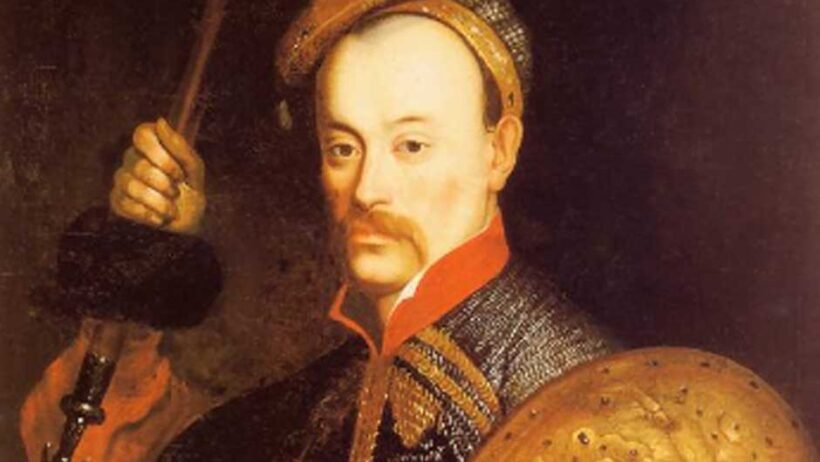Who Was Daniel Schultz?
Few artists in 17th-century Europe managed what Daniel Schultz accomplished. This remarkable painter served not one, not two, but three Polish kings while completely transforming how royal portraits were created. Born around 1615 in Gdańsk, Schultz became the most important figure in Polish Baroque painting during his lifetime.
What made Schultz special wasn’t just his skill with a brush. He bridged two worlds – bringing the innovative techniques of Dutch Golden Age masters to the traditional Polish court. Every portrait he painted told a story, capturing not just how someone looked, but who they really were inside.
His paintings still hang in major museums today. From the Hermitage in St. Petersburg to Warsaw’s National Museum, Schultz’s work continues to draw crowds centuries after his death. Art historians consider him the defining court painter of his era, someone who shaped Polish artistic tradition for generations to come.
Early Life and Artistic Foundation
Gdańsk in the early 1600s was a bustling port city where cultures mixed and trade flourished. Daniel Schultz grew up in this vibrant environment, surrounded by art from his earliest days. His uncle, Daniel Schultz the Elder, ran a successful painting workshop that had built a solid reputation across the region.
Young Daniel showed talent early. Around 1630, his uncle took him into the workshop as an apprentice. For five years, Daniel learned everything – how to mix paints, prepare canvases, and most importantly, how to really see his subjects. The workshop wasn’t just about technique; it was about understanding the business of art and the needs of clients.
When his uncle died around 1646, Daniel faced a choice. He could have stayed in Gdańsk and taken over the workshop. Instead, he made a bold decision that would change everything. He decided to travel abroad and learn from the best artists in Europe. This wasn’t common for young painters from Poland, but Daniel knew that true mastery required seeing the world beyond his hometown.
European Education and Artistic Development
Between 1646 and 1649, Schultz embarked on a journey that transformed him as an artist. He traveled through France and the Netherlands, studying with masters and absorbing new techniques. The Netherlands was experiencing its Golden Age – Rembrandt was at his peak, creating paintings that would influence art for centuries.
Schultz didn’t just observe; he formally enrolled at the University of Leiden in 1643. This gave him access to intellectual circles beyond the art world. He encountered humanist philosophy and new ways of thinking about human nature. These ideas would later show up in his portraits, adding psychological depth that was rare in Polish art at the time.
The Dutch masters left a lasting mark on Schultz’s style. From Rembrandt, he learned how to use light and shadow to reveal character. Frans Snyders and Jan Fyt taught him about painting animals and still life. But Schultz didn’t just copy these techniques – he adapted them, creating something uniquely his own.
When he returned to Poland in 1649, Schultz brought more than new skills. He carried a completely different vision of what art could be. The timing couldn’t have been better. The Polish court was ready for innovation, and Schultz was perfectly positioned to provide it.
Rise to Royal Court Painter
1649 changed everything for Daniel Schultz. King John II Casimir Vasa saw something special in the young artist and appointed him as a private court painter. A royal document from March 1650 reveals the king’s enthusiasm, praising Schultz’s “ability to reproduce veracious likenesses greater than in other painters.”
This wasn’t just a job – it was recognition of genius. The king didn’t just hire Schultz; he placed him under royal protection, making him an official member of the court. This level of royal endorsement was extraordinary for any artist, let alone one so young.
Working at court gave Schultz unprecedented access to Polish high society. He painted the king, royal family members, powerful nobles, and influential courtiers. Each portrait became part of a larger project – creating a visual record of Polish aristocracy during one of the most important periods in the nation’s history.
Schultz’s success continued across three different reigns. When Michael Korybut Wiśniowiecki became king, Schultz kept his position. Later, under John III Sobieski, he received the formal title “pictor Sacrae Regiae Maiestatis” in 1677. Serving three different monarchs successfully required more than artistic skill – it demanded diplomacy, adaptability, and consistent excellence.
Artistic Style and Revolutionary Techniques
What Schultz brought to Polish art was revolutionary. Before him, Polish portraits focused mainly on showing status and symbols of power. Schultz introduced something new – psychological depth. His portraits didn’t just show what people looked like; they revealed who they were as individuals.
Schultz mastered two different portrait styles and knew when to use each one. For international audiences, he painted in the Western European “rex armatus” style – kings in armor, projecting imperial power. For domestic purposes, he used traditional Polish “en pied” formats that emphasized national costume and cultural identity. This flexibility made his work politically valuable as well as artistically impressive.
His technical approach set him apart from other painters of his time. While many artists relied on harsh outlines, Schultz used soft color transitions to model forms. His color palette was sophisticated – rich variations of cerise, dark green, and orange, balanced with silver-brown tones. These weren’t random choices; they reflected his deep understanding of how color could create mood and atmosphere.
The psychological penetration in Schultz’s portraits was perhaps his greatest innovation. Drawing from Rembrandt’s approach, he introduced a new level of character analysis to Polish art. His portraits functioned as psychological studies, revealing inner character alongside outward appearance. This was revolutionary in a tradition that had focused primarily on status and symbolic representation.
Masterpieces and Notable Works
Several paintings showcase Schultz’s artistic genius and historical importance. The most famous is “Crimean Falconer of King John II Casimir with his Family,” painted in 1664. Now in the State Hermitage Museum, this masterpiece depicts Crimean Agha Dedesh with his family, commemorating their service to the Polish crown during the Polish-Russian War.
The “Crimean Falconer” demonstrates Schultz’s mastery of complex group compositions. He captured a specific historical moment while showcasing incredible technical skill in rendering different textures, fabrics, and skin tones. The sophisticated composition and rich colors make this one of the finest examples of Baroque art in Poland.
Schultz’s royal portraits established new standards for how monarchs should be depicted in art. His “Portrait of King Jan Kazimierz in a Cuirass” from 1659 perfectly balanced realistic portraiture with royal dignity. These weren’t just paintings; they were political statements that served both artistic and diplomatic purposes.
Beyond royal commissions, Schultz painted nobles, patricians, and prominent citizens with equal skill. His portrait of astronomer Johannes Hevelius captures intellectual character beautifully. His painting of noble Janusz Radziwiłł demonstrates mastery of traditional Polish portrait conventions while adding his signature psychological depth.
Even his animal paintings and hunting scenes reveal artistic versatility. Works like “Duck Hunt” show his understanding of movement and natural settings, reflecting the influence of Dutch animal painters while maintaining his unique vision.
Legacy in Museums and Collections
Today, Schultz’s paintings hang in some of the world’s most prestigious museums, ensuring his legacy remains accessible to new generations. The international distribution of his works testifies to his enduring significance in European art history.
The State Hermitage Museum in St. Petersburg houses several of Schultz’s most important works, including the celebrated “Crimean Falconer.” Being displayed alongside masterpieces by other European masters highlights Schultz’s place in the artistic hierarchy of his era. Museum visitors can experience his work in the context of broader European Baroque painting.
Poland’s National Museum in Warsaw maintains the most comprehensive collection of Schultz’s works. This collection serves as both artistic treasure and crucial repository of Polish cultural heritage. The museum’s preservation efforts ensure these works continue serving their original function as historical documents while remaining available for artistic appreciation.
Wawel Castle State Art Collections in Kraków house additional works by Schultz in their original historical context. Visitors can experience these portraits as they were intended – as integral elements of royal court culture. The Stockholm National Museum and Gdańsk National Museum also maintain significant holdings, reflecting the international scope of his career.
The distribution of Schultz’s works across multiple countries reflects the complex history of the Polish-Lithuanian Commonwealth and subsequent political changes. Despite wars, political upheaval, and changing borders, the preservation of these works demonstrates the enduring value placed on Schultz’s artistic legacy.
Daniel Schultz’s Enduring Impact
Daniel Schultz’s career represents a pivotal moment in Polish art and European Baroque painting. His innovative synthesis of Dutch techniques with Polish traditions created a distinctive style that influenced Polish art for generations. The psychological depth and naturalistic representation he introduced marked a fundamental shift that resonated far beyond his lifetime.
Serving three successive Polish monarchs demonstrates both exceptional artistic skill and remarkable adaptability. His portraits created a visual chronicle of Polish society during one of its most dynamic periods, providing invaluable insights into 17th-century Polish culture and identity that we can still appreciate today.
Schultz’s technical innovations, especially his mastery of color transitions and psychological penetration, established new standards for portrait painting. His ability to balance artistic truth with royal dignity created a template for court painting that remained influential long after his death in 1683.
As his works continue attracting museum visitors across Europe, Daniel Schultz’s legacy endures as testament to artistic vision that transcends cultural boundaries while remaining deeply rooted in national identity. His paintings aren’t just historical artifacts – they’re living works of art that continue speaking to contemporary audiences about universal human experiences of power, dignity, and individual character.
In the pantheon of European Baroque masters, Daniel Schultz occupies a unique position as both innovator and preserver of cultural tradition. This ensures his place in art history as one of Poland’s greatest artistic treasures, someone whose influence continues shaping how we understand both art and history.








